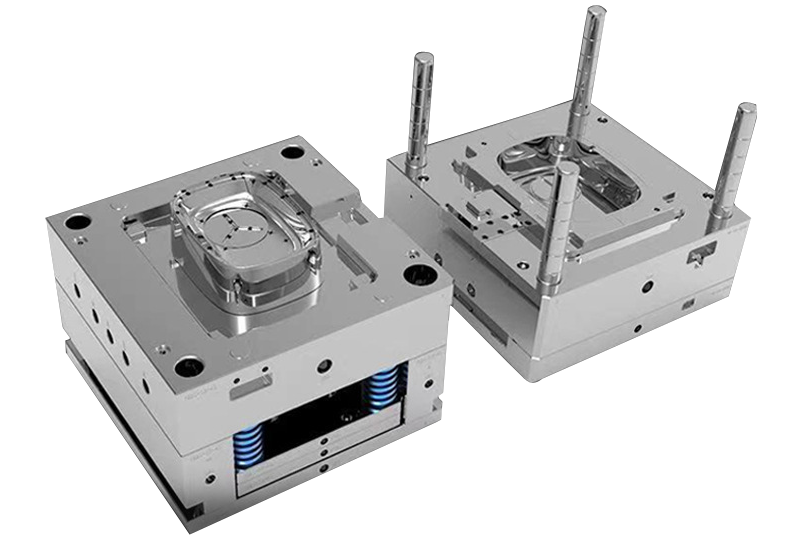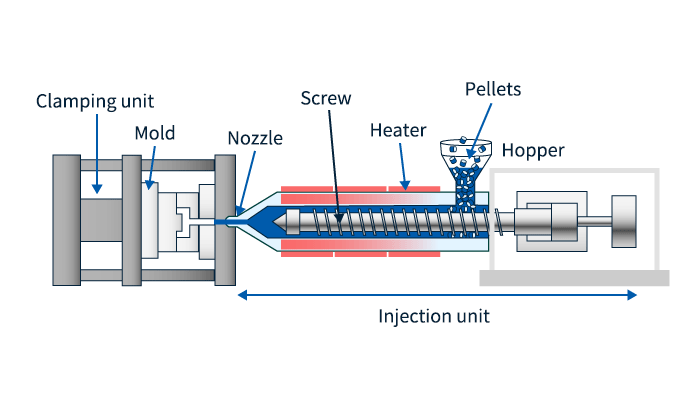The Future of Plastic Injection Molding: Fads and Innovations to Enjoy
As the plastic shot molding market develops, several key fads are arising that pledge to reshape its landscape. Automation and smart production methods are set to boost performance, while the shift towards lasting materials reflects an expanding ecological consciousness.
Automation and Smart Production
As the plastic injection molding industry advances, automation and wise manufacturing are taking center phase, reinventing production procedures - Plastic Injection Molding. The combination of advanced modern technologies such as robotics, IoT (Web of Things), and expert system is allowing manufacturers to boost effectiveness, reduce functional costs, and boost product top quality. Automated systems improve operations, lessening manual intervention and increasing throughput, which is crucial in meeting the increasing need for fast manufacturing cycles
Smart manufacturing modern technologies help with real-time surveillance and data evaluation, permitting business to maximize machine efficiency and forecast maintenance requirements. This aggressive method not just reduces downtime however additionally extends the life expectancy of tools. The usage of joint robotics, or cobots, improves the versatility of manufacturing lines, making it possible for makers and employees to run side by side securely and efficiently.
The adoption of automation in plastic injection molding is not simply a pattern however a critical vital for services intending to continue to be affordable in an international market. By harnessing these technologies, producers can accomplish higher precision, decrease waste, and adapt swiftly to changing customer demands, positioning themselves for sustainable development in a significantly computerized future.
Lasting Products and Practices
The press in the direction of automation and wise manufacturing has paved the way for a better focus on lasting products and methods within the plastic injection molding industry. Companies are significantly looking for environment-friendly options to standard petroleum-based plastics, resulting in the adoption of bio-based and recycled products. These lasting materials not only lower ecological effect but also straighten with customer demand for greener items.

In addition, collaboration between producers, material vendors, and ecological companies is cultivating technology in the growth of lasting products that fulfill efficiency criteria without endangering top quality. As laws around plastic use come to be more stringent, the sector is positioned to adjust by accepting these sustainable methods, guaranteeing long-term practicality and decreasing reliance on non-renewable sources. The assimilation of sustainability right into plastic injection molding is not merely a trend; it is becoming an essential part of company obligation and operational excellence.
Advances in 3D Printing
Current improvements in 3D printing innovation are considerably transforming the landscape of plastic shot molding. Impossible or as soon as difficult to achieve via conventional methods, the assimilation of additive manufacturing procedures enables for the quick prototyping of complicated geometries that were. This capability not just accelerates item development cycles however also minimizes material waste, straightening with the growing need for sustainable production practices
Additionally, the development of crossbreed manufacturing methods, which combine 3D printing and injection molding, supplies producers the capacity to produce detailed designs while preserving the efficiency of mass production. This strategy enables the manufacturing of tailored parts customized to specific customer demands without giving up the speed and scalability that shot molding gives.
Additionally, improvements in products, such as high-performance polymers and composites specifically created for 3D printing, are boosting the functional abilities of published parts. These materials can endure higher stress and anxiety and exhibit improved thermal buildings, making them suitable for more demanding applications.
As 3D printing remains to progress, its assimilation right into plastic shot molding procedures promises to enhance productivity, decrease expenses, and foster advancement in item layout, placing suppliers to much better meet the challenges of an open market.
Data Analytics and IoT Integration
Data analytics and the integration this article of the Internet of Things (IoT) are revolutionizing plastic injection molding by providing manufacturers with unprecedented insights into their procedures. By leveraging real-time information collected from interconnected makers and sensing units, producers can keep track of efficiency metrics, recognize inadequacies, and maximize manufacturing procedures. This data-driven method helps with predictive maintenance, lowering downtime and expanding tools life expectancy.
Additionally, IoT integration enables boosted quality assurance. By constantly tracking variables such as stress, cycle, and temperature times, suppliers can quickly discover discrepancies from developed specifications and make adjustments in actual time. This not just improves item consistency but likewise decreases waste and scrap prices.
The combination of data analytics and IoT modern technologies also encourages producers to adopt even more agile manufacturing strategies. With accessibility resource to extensive information analytics, organizations can react to market demands with higher flexibility, changing manufacturing routines and arrangements as needed. This flexibility is important in a swiftly altering production landscape.

Personalization and Layout Adaptability
Exactly how can personalization and design adaptability improve the competitiveness of plastic injection molding? Modification enables manufacturers to fulfill certain client needs, suiting distinct dimensions, forms, and performances that standard items may not fulfill.
Innovations in style modern technologies, such as computer-aided style (CAD) and rapid prototyping, more reinforce this trend. These devices enable developers to create detailed patterns and complicated geometries, which can be seamlessly incorporated into the production procedure. Consequently, suppliers can respond promptly to altering customer preferences and market needs.
Moreover, the application of modular tooling systems boosts style adaptability, enabling quicker adjustments between different item designs without substantial downtime. This flexibility can result in minimized lead times and lower manufacturing prices, making companies a lot more affordable and dexterous. Ultimately, accepting modification and design versatility in plastic shot molding not only raises item offerings yet also enhances market positioning in an ever-evolving landscape.
Verdict
The future of plastic shot molding is straight from the source defined by considerable developments in automation, sustainable practices, and innovative products. Modification via modular tooling and fast prototyping will enable manufacturers to remain affordable and receptive to the vibrant needs of the market.

The future of plastic shot molding is identified by substantial developments in automation, sustainable techniques, and cutting-edge materials.